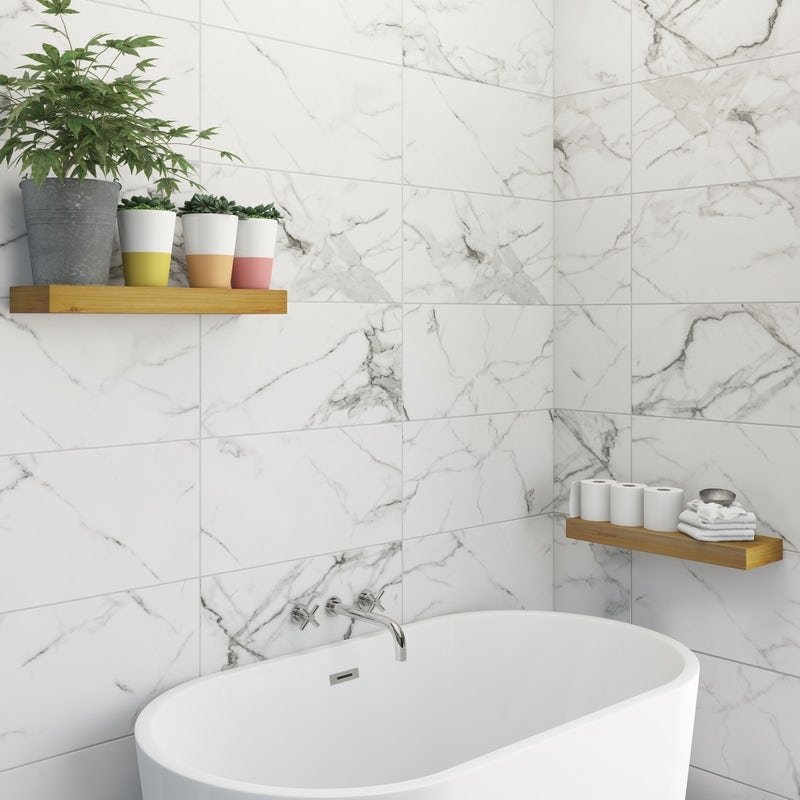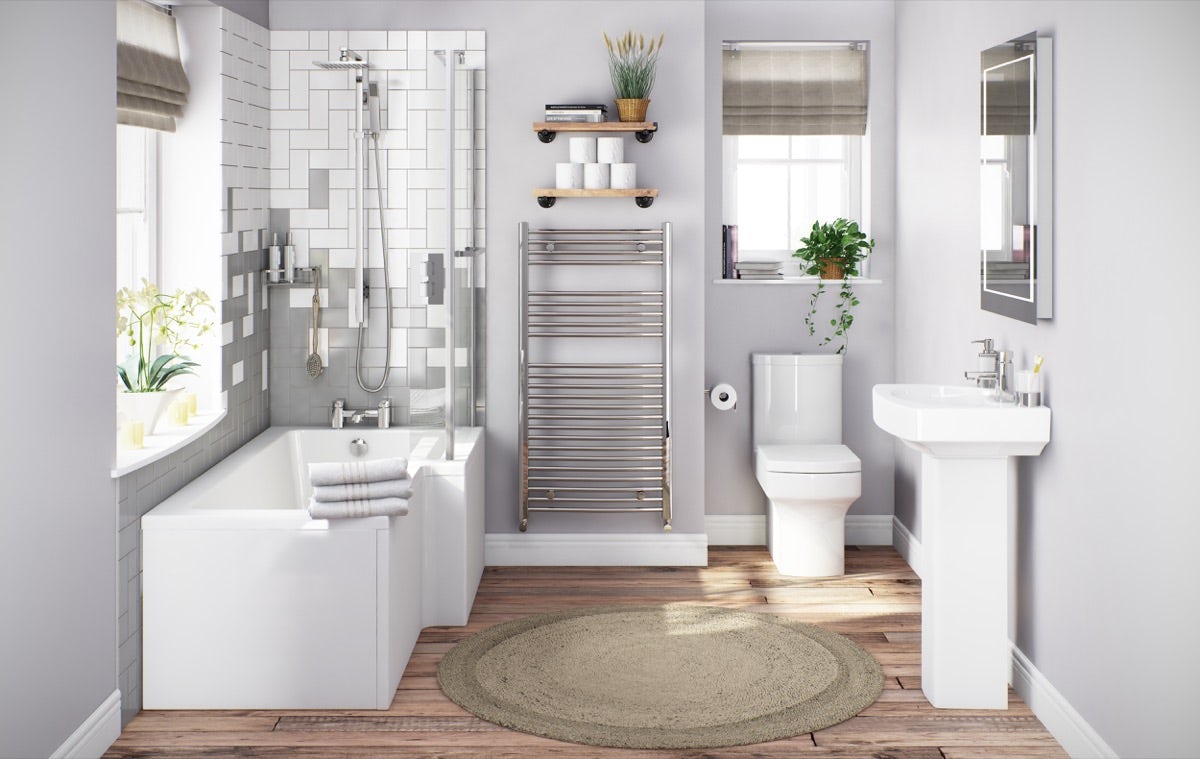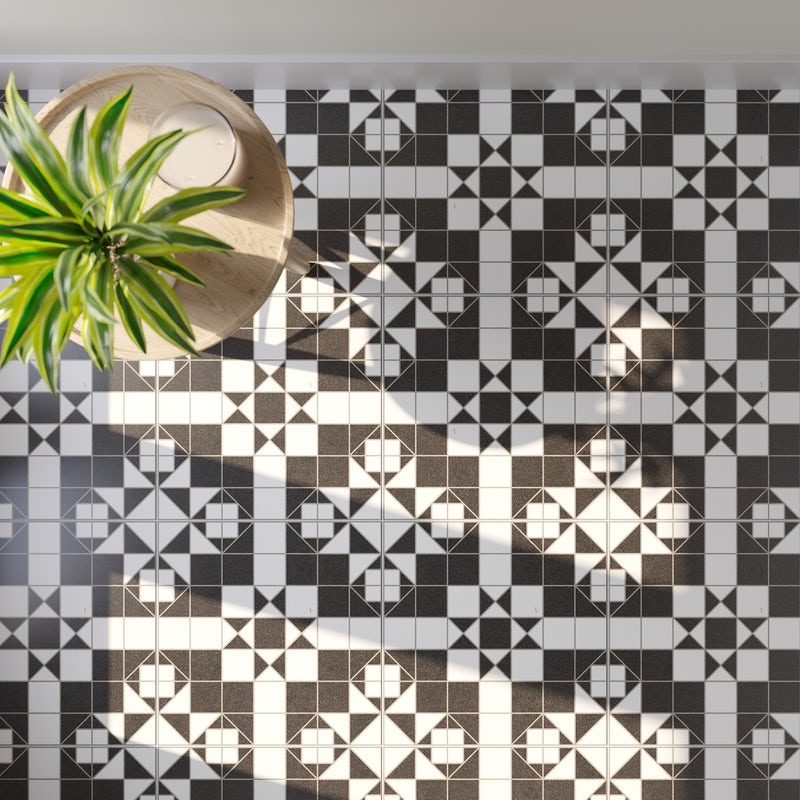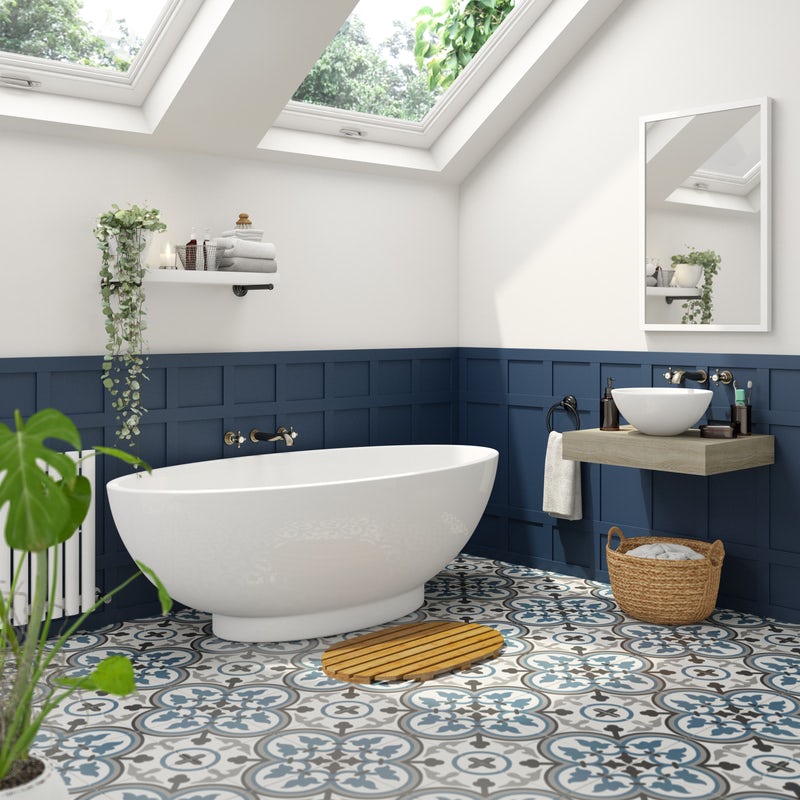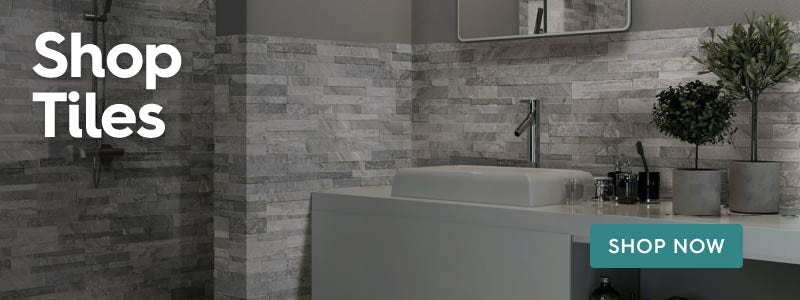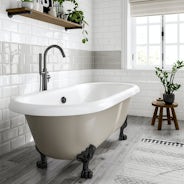Unsure whether to tile your bathroom walls or floor first? Read on for some expert DIY advice from Victoria Plum...
Introduction
Those of you in the know will be familiar with the fact that this specific topic has been hotly debated for decades. Tile the floor first or the walls first? And should you tile before or after fitting the bathroom?
These questions have always been critical for homeowners and for good reason. Before tiling bathrooms, it is important to know which tiles go on first as this makes all the difference in planning your bathroom modelling workflow.
While both ways are equally acceptable, many certainly claim that starting with the walls first produces a cleaner outcome. Is that true? We take a look...
Why choose tiles?
Firstly, why should you choose tiles in the first place? Maybe your mental image of tiles is old, gaudy, out-of-fashion fittings in your grandma's bathroom, and you don’t think it looks very modern? Or perhaps you just don’t quite see the need for tiles when everywhere else in the house goes without. Tiling is not just a design choice, however. Contrary to popular belief, choosing to tile your bathroom is as much a technical decision as a stylistic one. The bathroom features wet areas with hot water, toilets, a shower tray, bath panels and things like a vanity unit.
Easy to maintain
If you’ve lived in a house with a tiled bathroom for a while, you are probably familiar with the grouts between the tiles in the bath area getting dirty with mould and mildew. This is simple to sort, as bleach or another kind of cleaner will easily freshen the area up for display results. You just spritz a little on the grouts, right?
Grout and tiling in places around the bath, toilet and hand basin are easy to clean. Having an un-tiled floor means the surface will be made from concrete, wood, or other materials such as vinyl. Note, mould and mildew are notoriously difficult to clean off of those surfaces and the material is not always sealed or filled. It is a lot easier to freshen up tile walls.
Protect from moisture and damage
With tile floor as part of your bathroom installation, the room will have better moisture resistance. Tiles are more resilient than bare bathroom walls and floors and come with a better seal. This can be placed around the bath, bath panels, waste pipes and at floor level.
Standard floors and walls are also waterproof to an extent as otherwise, your house would be soaking up water like sponges. The waterproof coating of your un-tiled walls however, can be easily washed away with harsh soaps, cleaners and modern shampoos.
Heat trappers
Tiles are excellent heat radiators. They keep your room warmer in the winter, and generally contain heat quite well. If you decide to install stone tiles, this means your bathroom has that traditional warming feel to it. It also means that taking hot showers or baths that generate hot mist can help warm the setting up, making it a really cosy spot to unwind and rest. You could create a spa-like feel in a tranquil corner of your location, relaxing in the bath properly with your feet up, closing the door and looking up towards the ceiling. That's one job nobody minds doing.
Last forever
Tiles are made from stone and ceramic, which are both materials that last thousands of years. Even with ancient firing and glazing techniques, surviving getting ruined at sea, our museums still have a hold on so many pots from antiquity. The answer is in the material that has been used, so you don't need to search around too much to find something durable and long-lasting. Strong material is a life investment.
According to some sources, a stone tile can last you upwards of a century, whereas a ceramic tile might be well and good for about 75 years.
Cost-efficient
Tiles cost a fair bit, granted. Compared to having a normal floor where the upfront cost and the labour price may be lower, tiles will save you money in the long run if they are installed. This is thanks to the high quality and long-lasting properties.
For more information, why not read our tile buying guide?
Floor vs wall
Tiling the floor first
People have theorised about this for a very long time, and there are a few good reasons why you should lay tiles on the floor first.
Firstly, the tiled wall hangs over the space that the tiled floor occupies, meaning that the floor should be tiled first. This is so that the bottom row of tiles on the wall and corners can sit on the bathroom floor tiles, and thus look quite a bit more coherent.
Another reason for tiling the floor first over wall tiles is so that after finishing the tiled floor, you have some time in between where you can use the toilet or shower. You won't have to worry about damaging the floor with some unfortunate water spillage.
There are a few reasons that professional designers or tilers don’t tile the floor first, however. One of the main reasons is that if you tile the floor first, tiling the walls then becomes quite a stressful process. This is because rogue tiles and mortar regularly do fall off whilst you’re in the process of tiling.
This can cause damage to your already tiled floor, and replacing and re-tiling the floor is a big hassle, not to mention, will cost more.
If you have to tile the floor first, use some sort of protective material like a cloth or newspaper, set right below the wall you’re working on. Also, note that the tile mortar on the floor is not safe for standing on until it is set perfectly, which will also account for some time needed. You should also protect around the bath area.
Tiling the walls first
If you’re going for a suspended tile look, where the wall tiles start from the height of where your floor tiles rise, then it could be more difficult. To create good wall results, you need to measure precisely how the tiles on the wall would be placed to achieve the desired look. This might be part of a professional’s toolkit, but may be tricky for first-time DIYers.
You can try to negate the difficulties by using ledgers or space savers, much like the professionals. This is to leave space for the floor tiles along the wall. It will help you to save time in reinstallation and mortar drying, plus money in potential damages.
Conclusion
In the end, you should look primarily at your personal preferences. If you’re working on it yourself and can spare the time, then opt for the floor first as it’s then easier that way to do the walls. If you’re scared of damaging your newly-bought floor tiles, which would in turn affect the waterproofing capabilities of your floor, then tile the walls first with precision and caution.
If you’re looking to engage a professional, ask for their opinion or let them handle the details completely.
Tile ideas for your bathroom, kitchen and more
For more great tile ideas head to our bathroom tiling ideas page or click on any of the links below:
- Tiles inspiration gallery
- 5 things to consider when choosing your bathroom tiles
- 5 exciting and unusual ways to use tiles in your bathroom
- 6 more bathroom tile ideas that'll capture your imagination
- Small bathroom tile ideas
Tiling advice from the experts
At Victoria Plum, we have plenty of expert advice from Trade professionals around the subject of tiling. Check out some of these articles:
- How to tile
- How to replace a damaged or cracked tile
- Should I fit the toilet before or after tiling the floor?
- Can I tile over old tiles?
Shop tiles
Now you know our top tiling tips, perhaps it’s time to choose the perfect tiles for your bathroom? Click on the image below to browse the full and comprehensive range of quality wall and floor tiles available at Victoria Plum.

